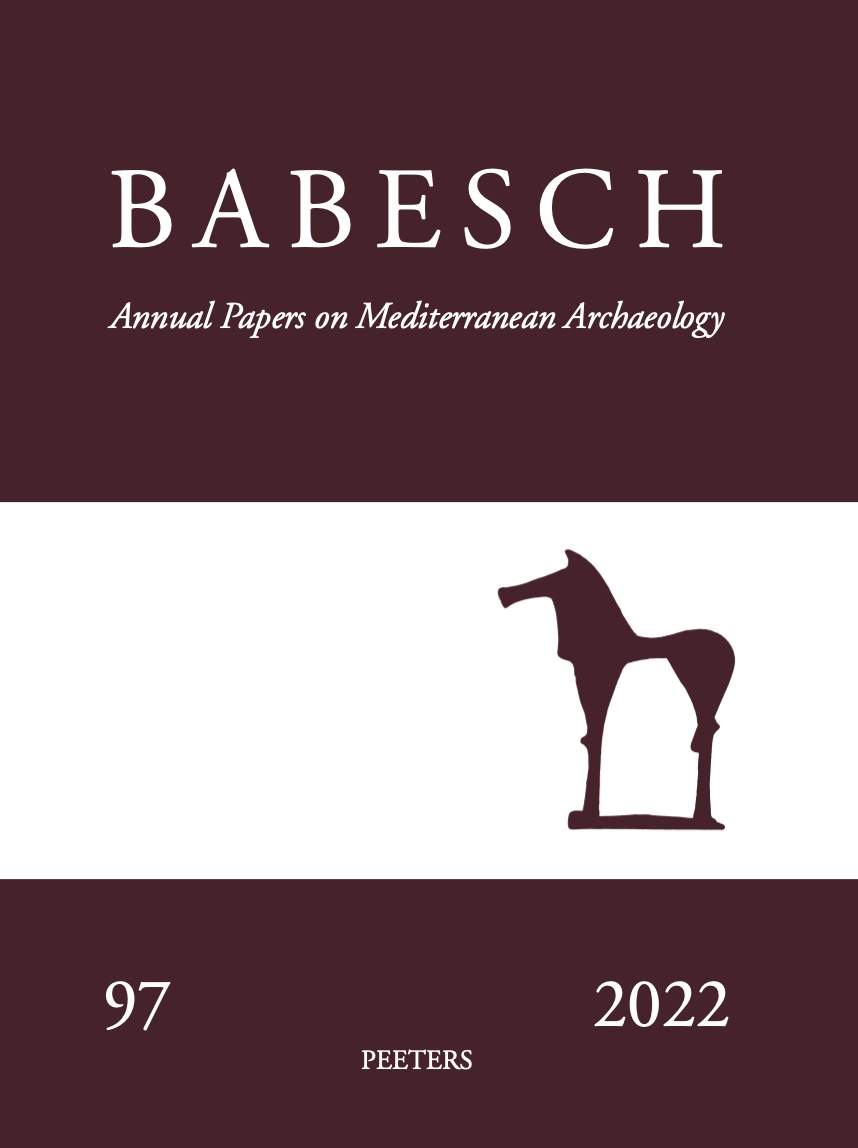 previous article in this issue previous article in this issue | next article in this issue  |

|
Document Details : Title: Theseus at the Gates of the Labyrinth Subtitle: Interpreting a Pompeian Painting Author(s): LING, Roger Journal: BABESCH Volume: 84 Date: 2009 Pages: 111-120 DOI: 10.2143/BAB.84.0.2041639 Abstract : A painting of Theseus and Ariadne in the House of M. Lucretius Fronto at Pompeii shows the moment when the princess hands the hero the ball of wool that will enable him to find his way out of the Labyrinth; but the action of Theseus, who holds his arm over his head with a fillet dangling from the hand, presents a problem of interpretation. A recent theory has proposed that he is crowning himself after his victory over the Minotaur and, therefore, that the painting combines two moments in time: the preparations for the expedition into the Labyrinth and the celebrations after its successful outcome. The present paper suggests, by analogy with other Pompeian paintings of the same subject, that Theseus is actually removing his sword prior to entering the Labyrinth naked and unarmed. This is an iconographic variant found only at Pompeii and only for a brief period shortly before the middle of the 1st century AD. |
|
